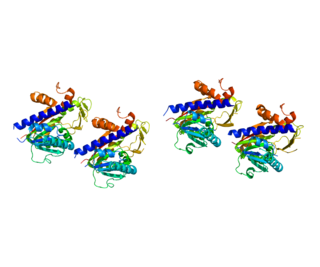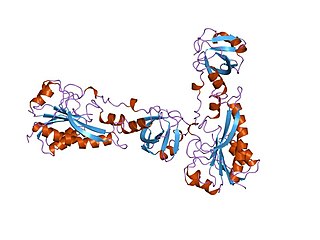| arginyltransferase | |||||||||
|---|---|---|---|---|---|---|---|---|---|
| Identifiers | |||||||||
| EC no. | 2.3.2.8 | ||||||||
| CAS no. | 37257-24-2 | ||||||||
| Databases | |||||||||
| IntEnz | IntEnz view | ||||||||
| BRENDA | BRENDA entry | ||||||||
| ExPASy | NiceZyme view | ||||||||
| KEGG | KEGG entry | ||||||||
| MetaCyc | metabolic pathway | ||||||||
| PRIAM | profile | ||||||||
| PDB structures | RCSB PDB PDBe PDBsum | ||||||||
| Gene Ontology | AmiGO / QuickGO | ||||||||
| |||||||||
In enzymology, an arginyltransferase (EC 2.3.2.8) is an enzyme that catalyzes the chemical reaction
- L-arginyl-tRNA + protein tRNA + L-arginyl-protein
Thus, the two substrates of this enzyme are L-arginyl-tRNA and protein, whereas its two products are tRNA and L-arginyl-protein.
This enzyme belongs to the family of transferases, specifically the aminoacyltransferases. The systematic name of this enzyme class is L-arginyl-tRNA:protein arginyltransferase. Other names in common use include arginine transferase, arginyl-transfer ribonucleate-protein aminoacyltransferase, arginyl-transfer ribonucleate-protein transferase, and arginyl-tRNA protein transferase. It has 2 cofactors: mercaptoethanol, and Cation.





